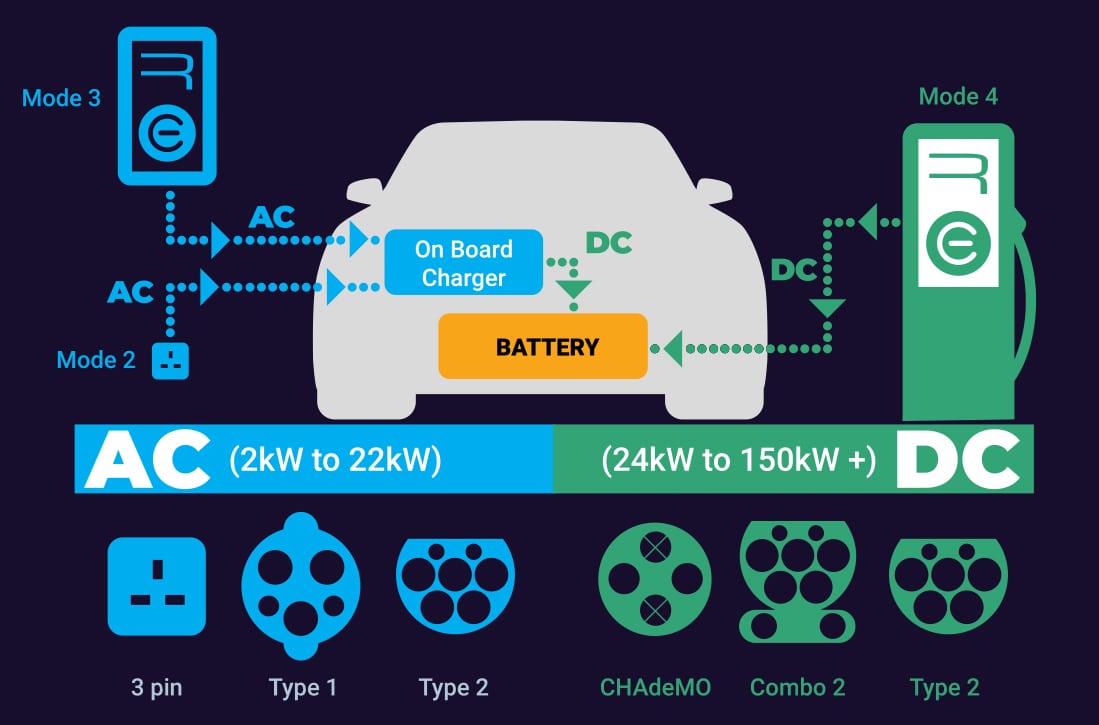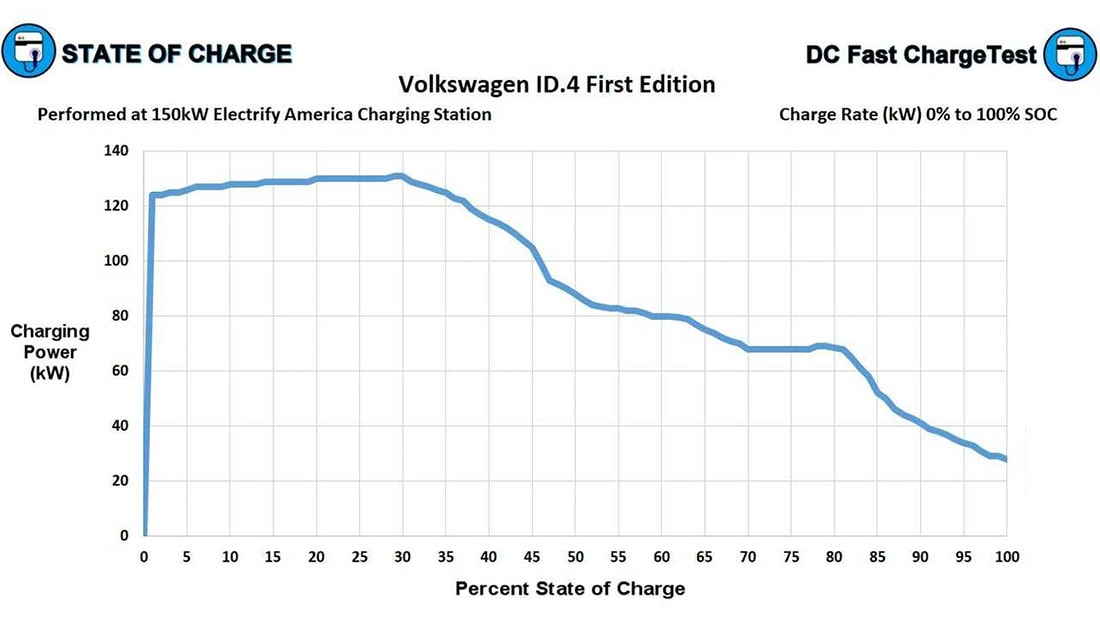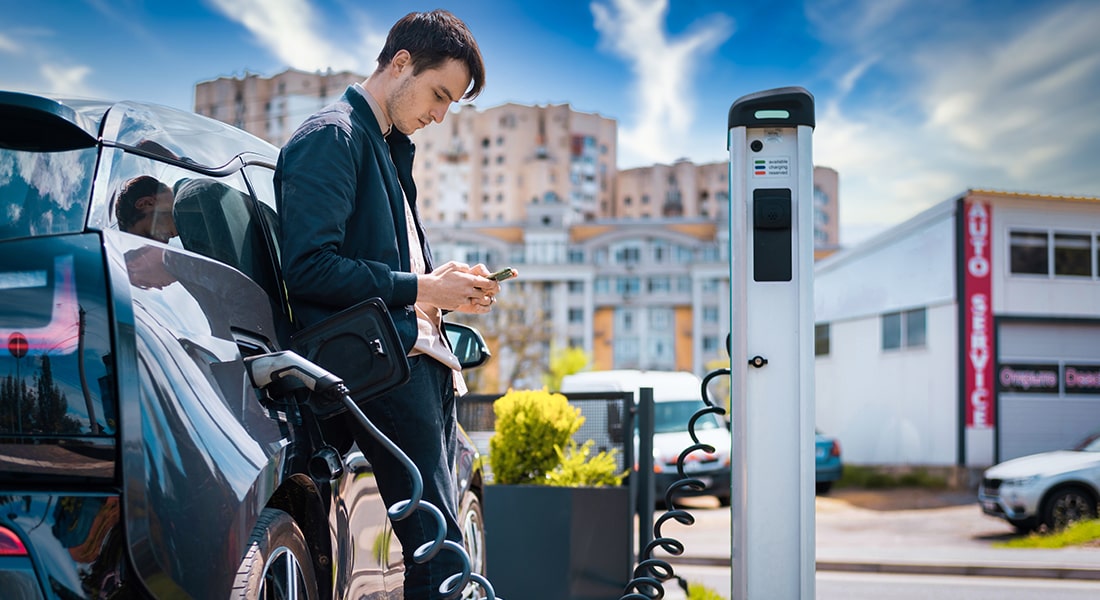| Charger type | Output power | Cost of charger |
|---|---|---|
| Bharat AC-001 | 3.3 kW | ₹ 70,000 |
| Bharat DC-001 | 15 kW | ₹ 2,40,000 |
| Type 2 AC | 22 kW | ₹ 1,25,000 |
| CHAdeMO | 50 kW | ₹ 14,50,000 |
| CCS | 50 kW | ₹ 14,50,000 |
Quick Summary:
As the electrification transitions further with more updates and modifications, the capacity of charging has exceeded the power rating of existing EV charging stations. The new EV gen models continue to raise the bar in terms of the rate of charging compared to its previous EV gen models.
In this blog we will discuss the essentials of DC fast charging, analyze the mechanics of fast DC charging, cost of installation and the requirements for setting up an EV charging station.
Table of Contents
Introduction
The term DC stands for “Direct Current” – the power type that the battery actually supplies and can store directly. However, to date majority of the EV chargers use (alternating current) AC power sources to refill the batteries.
Now since batteries cannot directly receive AC power, so the electric vehicles have an onboard or converter rectifier. The equipment transforms the AC power into the DC that is required as an input to the electric car batteries. Whenever there is an AC power input to the EV, there is always a convertor in the backend that does all the work and alters the power conversion to the DC mode which the batteries can consume directly.
The charging speed and time rate for an EV under AC charging depends heavily upon the acceptance rate of the converter employed for charging. This rate varies from one manufacturer to the other. The AC charging process demands an add-on task to be fulfilled, hence the speed of AC-fueled charging is quite slow.
Almost all the charging stations that are Level 2 rated (7 kW to 22 kW) are operated on AC power, being heavily dependent on the rectifier for DC conversion.
Not only does the AC charging take more time, but comes along with the additional capital and upfront costs (onboard rectifier) for both EV manufacturers and owners. The EV charging stations operating on AC infrastructure on the other hand face lesser accommodation of EVs at a time. It takes more than an hour for an average EV with a 40 kWh to full charge before the next car can plug in.

A DC fast-charging system is the alternative to it, saving them time, capital, and the upfront cost of owning an onboard charger. Since no conversion is required, the DC fast charging setup is a win-win utility for both EV manufacturers and owners. Interestingly, the wait times to charge an EV reduce by 50%, because with a DC fast charger it is possible to achieve 80% charge within 30 minutes.
Let us in detail discuss the speed of DC fast charging taking different EVs into consideration based on their battery capacity.
Fewer wait times = More customers
Access the full potential of your charging station with our market-tested DC fast charger to increase your customer base by upto 50%.
Speed of DC Fast Charging
The rate of charging for a DC fast charging station is gauged as its maximum output (in kilowatts – kW). If we talk about light-duty vehicles, you’ll notice that the charging stations range from 50 kW to as high as 350 kW. It is a thumb rule that lower the kW, slower the charge. However, it is important to note that selecting a higher-power rated DC fast charger over a lower-powered one does not assure that the EV will charge faster.
This is exactly where the acceptance rate of your EV comes into play. In layman’s words, the rate of acceptance of an EV is the utmost amount of power it can accept (measured in kW).
Consider an EV with an acceptance rate of 50 kW, which is considered quite slow in today’s times. For this EV, the peak charging rate would be nearly the same even if you plug in with a fast DC charger, rated at 62.5 kW, 150 kW, or 350 kW.
The converse also holds true. An EV that can be charged upto 250 kW which is the acceptance rate for that EV, if connected to a station rated at 150 kW wouldn’t be able to achieve its charging peak. In the EV current scenario, the acceptance rate of on-road EVs varies from somewhere around 100 kW to 250 kW
Let us discuss another important concept with reference to the charging speed of EVs, i.e. DC fast charging curve. Each model has its own charging curve, which implies the amount of power it pulls and the number of km it adds over time with each charging cycle.
Understanding the essence of an EV’s charging curve can curb range anxiety, particularly on longer commutes while deciding the logistics or determining the nearest EV charging station. It is advisable to switch between chargers (like a home charger, level 2 AC charger, or a DC fast charger) saving time in lingering for a long period at a given location.
Normally, it is only for about a part of the charging session that an EV would charge at its maximum rate and that is in the lower half of the battery pack. The charing peak depends upon the electric car. The arbitrary which is generally constant throughout the charging curves is the ramp down in the charging speed which is approximately at about 80% charge to shield the battery.
Let’s have a glance at the charging curve below taken from InsideEVs. The vertical axis depicts the drawn power by the EV in kW, and the horizontal axis represents the percent state of charge for the EV battery.

It is very early that the EV attains its acceptance limit at 125 kW, and it retains the rate till reaches 30% charge. After this point, it begins to consistently pull less power, nearly 100 kW which is at 45%, and 80 kW corresponding to 60%. A sharper drop persists when the vehicle achieves upto 80% charge.
The second angle to visualize a DC fast charging cycle is taking the time cycle into consideration. It is evident from the graph that it takes about 20 minutes for the EV to reach 50% from no charge, additional 20 minutes to go from 50 to 80%, and then another 25 minutes to fully charge.

It should be kept in mind that charging curves and acceptance rates are not linearly at par. In simpler terms, it can be inferred that an EV having a higher acceptance rate doesn’t necessarily have a fairer charging curve. Hence, it is important to clarify and convey the right information for the users to take an informed decision, especially for longer commutes.
Your one-stop solution for the most demanded EV Components
We are India’s most reliable EV component manufacturer and suppliers. Get in touch with us to discuss your requirements today!
Electric Vehicle Charging Station Cost In India
The cost for public DC fast charging varies depending upon the geo spatial location, orientation, vicinity of the charging station, and network provider, for example, TATA Power, Okaya power group, Voltic, EVQPoint, and many others.
The setup cost for a charging station may vary from 1 to 10 lakhs. Typically, the cost of setting up a charging station is linked with the standard of EV charging employed, power output needed, and most importantly the speed of charging needed to achieve.

To broaden the perspective of the whole argument let’s understand from the perspective of an EV driver. Suppose your EV can optimally achieve 6 Km per kWh and you stop at a charging station. You charge your EV with 50 kWh power which is ideal for sustaining at a 280 Km range and will be paying a nominal fee which is in contrast way cheaper (upto 84%) than fueling up a gasoline car for the same distance. An EV can cost upto Rs 1.4 per km, whereas an average petrol car can cost around Rs 10 for the same.
Requirements for Charging Infrastructure (PCI)

Now, talking about the cost of DC fast charging which is more expensive than home charging because of a few reasons. One is that there is a heavy capital expense and infrastructure investment linked with maintaining and installing the EVSE equipment and the EV grid integration.
The electricity distributors like DISComs cater to the EV charging station organizations and groups on a real-time basis with the capital expense and the added cost incurred for EV grid integration, which may add up to the electric utilities based on the maximum power drawn in the given time frame.
Opinion: Influence on Your Battery Pack
The new EV models are constantly hitting the auto market segment with higher voltage capacities, equipped with HV battery management systems to cut down the adverse effects of voltage and thermal fluctuations during charging. The same applies during a DC fast charging cycle. In comparison with Level 1 and 2 charging, DC fast charging imparts more residual stresses on the batteries in the form of thermal heat buildup.
So far we have covered the basics of the DC fast charging ecosystem from both the perspective i.e. infrastructure owner and the driver. We would conclude this blog with the opinion that in the EV charging ecosystem, charging levels should be carefully selected based on the driving needs, vicinity of the charging station, and consumers’ availability to charge their EV.
Bacancy’s extended venture – Bacancy systems is India’s leading EV component manufacturer serving the e-mobility market with a wide array of next-gen EV products and components.
Frequently Asked Questions (FAQs)
Currently three types of DC fast charging: Combined Charging System (CCS), CHAdeMO (“CHArge de MOve”), and Tesla Supercharger. The most common type is CCS, though CHAdeMO is still the standard with some automakers. Each has its own unique charge port connector
You should avoid charging your electric car’s batteries every night. Frequent charging cycles from 0% to 100% can cause your vehicle’s battery to degrade, especially when using a fast charger, which refills the battery at a rapid rate.
A vehicle capable of the full 350 kW charging power can be charged in approx. 10-15 minutes, which is significantly faster than it takes a more common 50 kW charging station as of today. Each charging station and point offers the potential of up to 350 kW.
Your Success Is Guaranteed !
We accelerate the release of digital product and guaranteed their success
We Use Slack, Jira & GitHub for Accurate Deployment and Effective Communication.



